The Evolution of Social Media Marketing
Social media is a powerful tool. When used correctly it connects an audience to a brand and builds brand trust. But in order to use social media effectively, it’s important to know its history – how it got started, how it’s changed, and where it’s headed.
So, we’ve embarked on a mini history lesson: The Evolution of Social Media Marketing 101. This article will first give you an overview of social media platforms through the years, how social media platforms became marketing tools, and a few marketing tips and tricks. We suggest you bookmark this and refer to it whenever you need some inspiration for fresh social media marketing ideas.
Ready to dive in? Let’s go!
Social Media Platforms Are Born
It’s hard to believe the first social media platform was created almost 30 years ago! While it may no longer be operating, it was the springboard for the many social platforms that followed including some big names like Facebook. Join us as we go all the way back to the start: 1996!
Six Degrees (1996-2000)

Source: Inter#Acktives
For many of us, we think Myspace was the first social media website. Well, surprise: it was Six Degrees! Created by Andrew Weinreich, Six Degrees was founded in 1996 and launched in 1997. (Its creator, Andrew Weinreich is often referred to as the father of social networking) It was a platform where users could create a profile and connect with friends, and even send messages within the network. It managed to have millions of registered users before YouthStream Media Networks purchased it for $125 million in 2000.
Bolt (1996-2008)
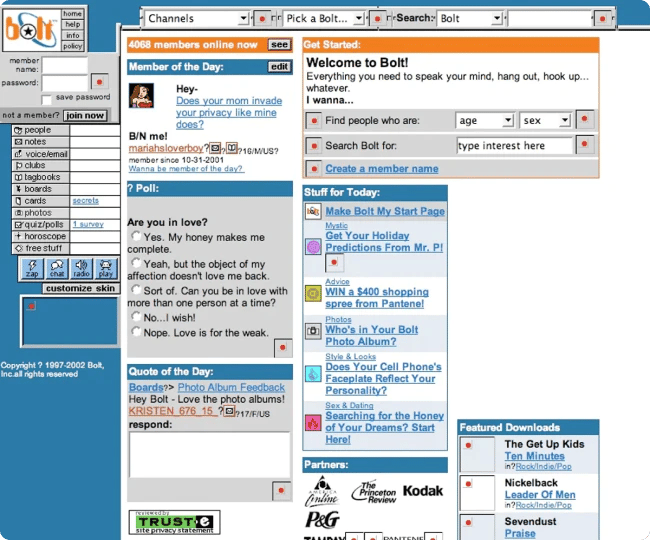
Bolt was another social media platform that launched in 1996. Its creator Dan Pelson’s vision was to connect 15-20-year-olds via message boards, voice chats, email, and instant messaging. After filing for bankruptcy, the site shut down in 2007. It was then acquired by new owners in January 2008 and operated until permanently going offline in October 2008.
Hot or Not (2000-2012)

Source: Photofeeler
Often referred to as the inspiration for Facebook and YouTube, Hot or Not encouraged users to post photos of themselves so they could be rated on a scale of 1-10 for attractiveness. Naturally, the site was seen as superficial and problematic for feeding into people’s insecurities. In 2008, Hot or Not was sold to Avid Life Media. Then in 2012, it was purchased by Badoo and eventually rebranded into its current version: Chat & Date app.
Friendster (2002-2018)
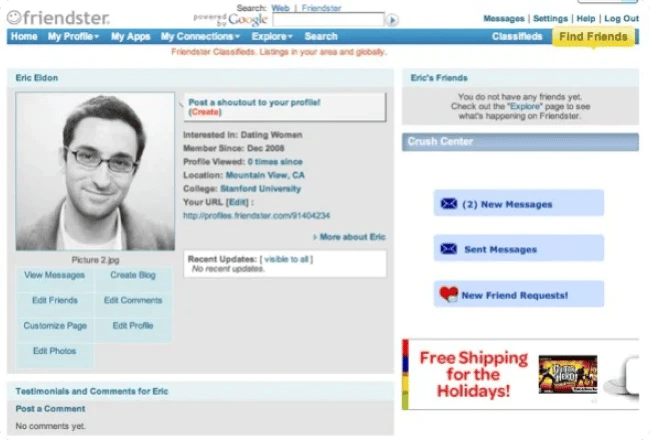
Source: VentureBeat
Friendster was imagined as a dating site where users would connect with “friends of friends.” They could set up a profile with status updates, and they could message people that had friends in common. Unable to deal with competition, as well as some serious technical problems, the platform’s traffic plummeted in 2009, and officially ceased to exist in 2018.
LinkedIn (2002-Present)
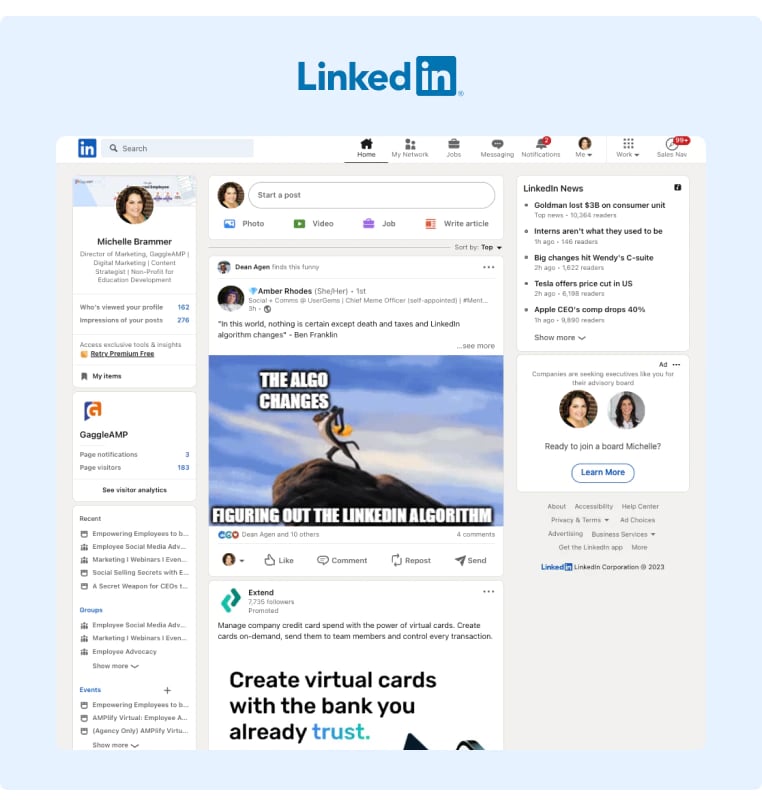
Often referred to as the “Facebook for grown-ups”, LinkedIn is a social platform whose target audience is businesses and professionals looking for jobs. Although the idea is to strengthen business connections and keep the focus on the business community, today we see more and more personal posts, which heats up the debate of whether LinkedIn is becoming just another Facebook.
Myspace (2003-Present)
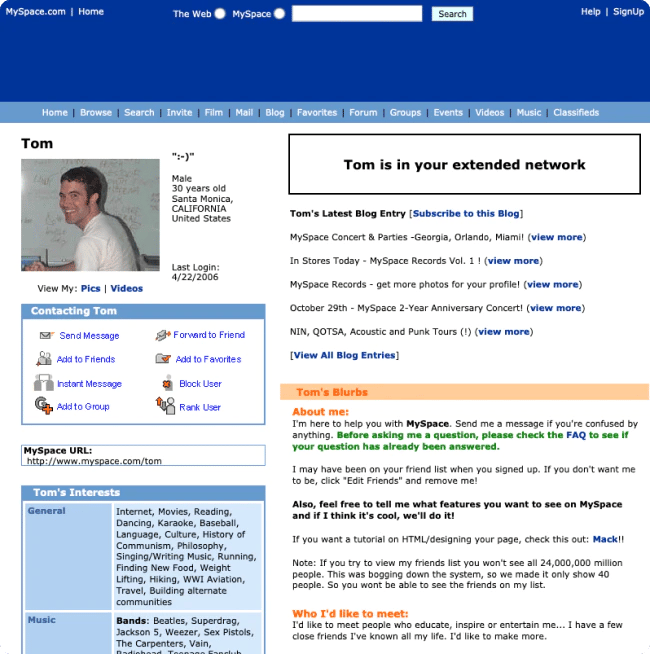
Source: GitHub
Before Facebook, there was Myspace (previously known as MySpace). Launched in 2003, users would spend hours customizing their profiles, connecting with friends, sharing photos or blogs, posting in forums and groups, playing games, and listening to music. And don’t get us started on the infamous “MySpace Top 8!” In 2011, Myspace rebranded itself as a music-oriented social platform and is still in operation.
Facebook (2004-Present)
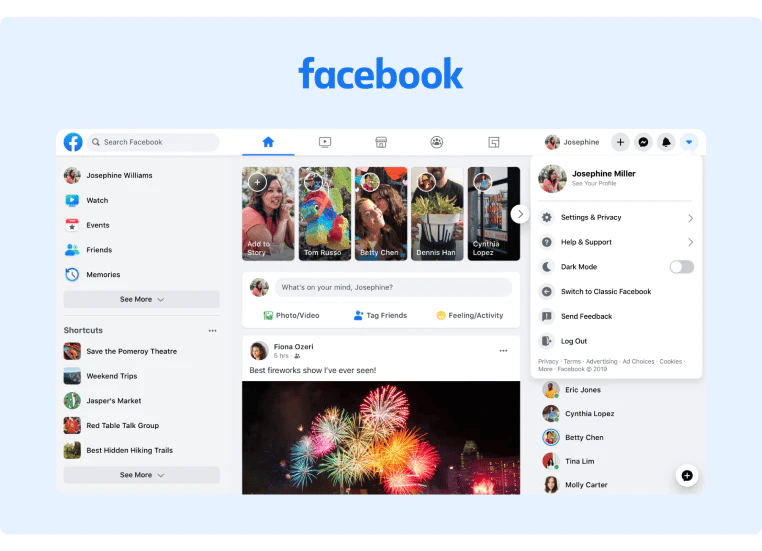
Source: Engineering at Meta
Taking the world by storm, Mark Zuckerberg’s “The Facebook” (later renamed Facebook) started as a site similar to Hot or Not for Harvard students, only later to be rebranded as a social platform for sharing photos, status updates, and playing games. Today Facebook has 2.93 billion users.
Flickr (2004-Present)
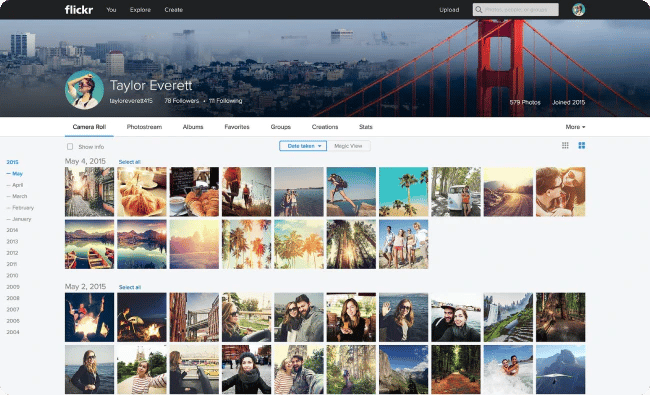
Source: Flickr Blog
Flickr, founded by Stewart Butterfield and Caterina Fake, was the first social platform with a focus on photo sharing. Today it has 112 million users and they can upload, share, tag, organize, and search for photos and videos.
YouTube (2005-Present)
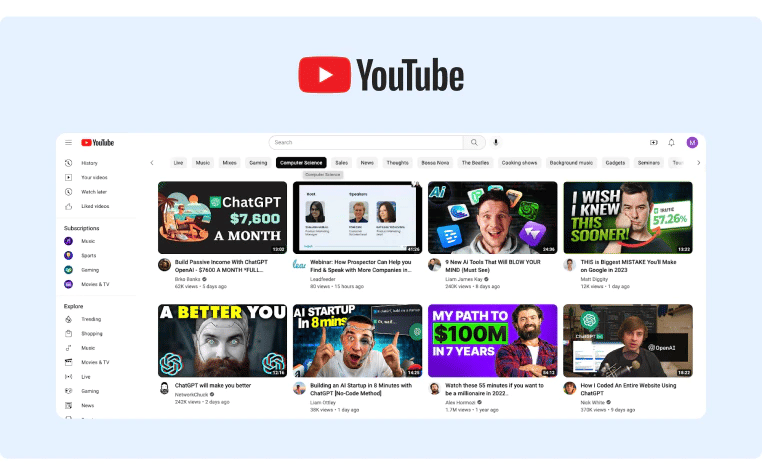
YouTube was launched by Jawed Karim, Steve Chen, and Chad Hurley in 2005. The first video ever posted on the platform was “Me at the Zoo,” a 19-second clip by Karim. By May 1st, 2021 this clip gathered 164,011,011 views with an exceptional rise in 2020 and 2021.
Today, YouTube is the second most popular social media platform.
Twitter (2006-Present)
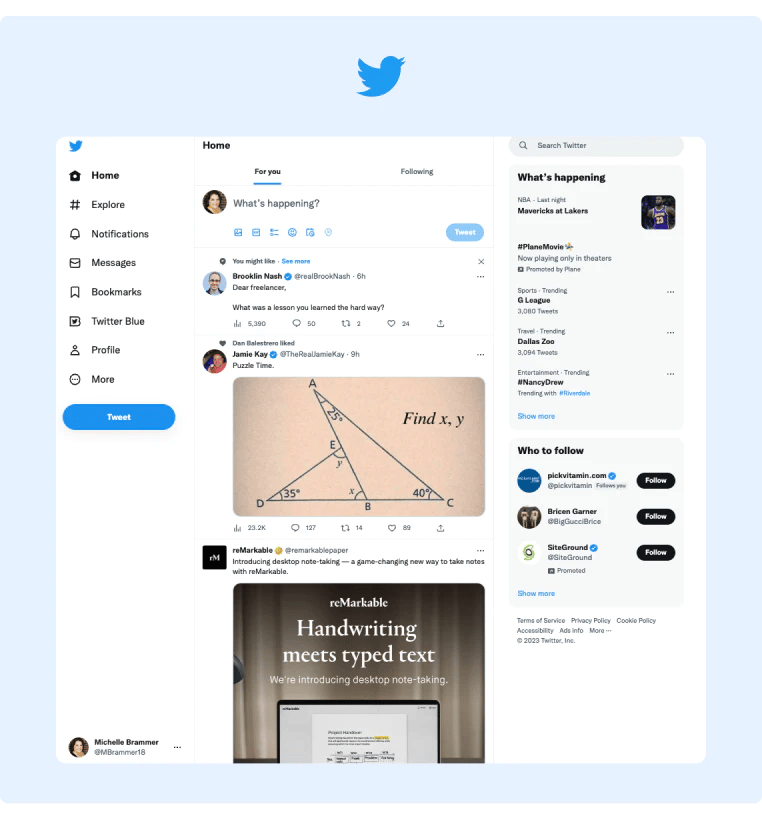
Originally imagined as a tool for text messaging, Twitter initially allowed users to share short messages up to 140 characters. In 2017, that number went up to 280 characters. Today, Twitter allows users to also share photos, videos, and links, which can be searchable via Twitter search.
Tumblr (2007-Present)
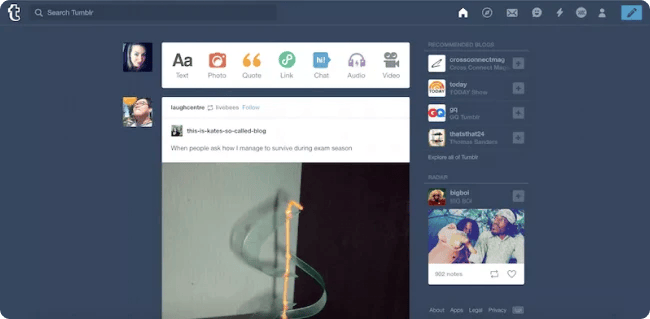
Source: ThoughtCo
Tumblr differentiates itself from other social platforms by allowing its users to fully customize their profiles, unlike the standard viewing pages of other sites. Its main purpose is publishing micro-blogs, following other bloggers, and commenting on content. In May 2022, the platform had 291.7 million visits worldwide.
Pinterest (2010-Present)
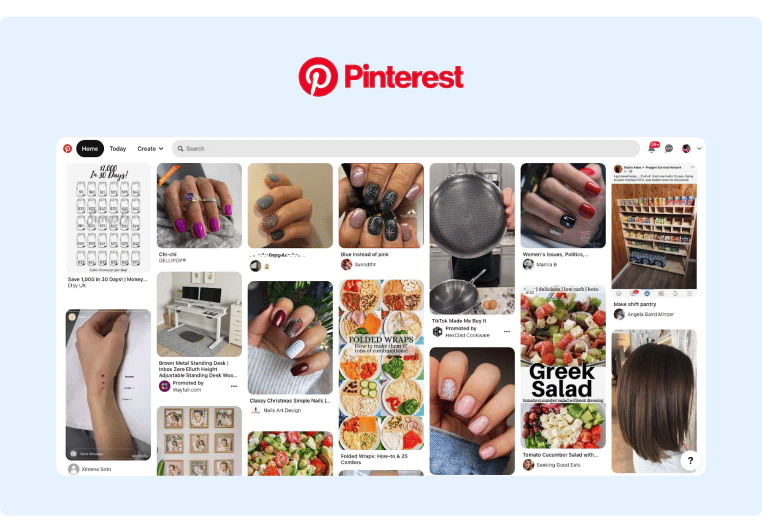
Pinterest calls itself a visual discovery engine. Users can use its platform to search for recipes, quotes, home decor, style, and more. When you find a pin you like, simply add it to your personal board for inspiration and quick reference. Founded by Ben Silbermann, Evan Sharp, and Paul Sciarra, Pinterest had 445 million active users in the third quarter of 2022.
Instagram (2010-Present)
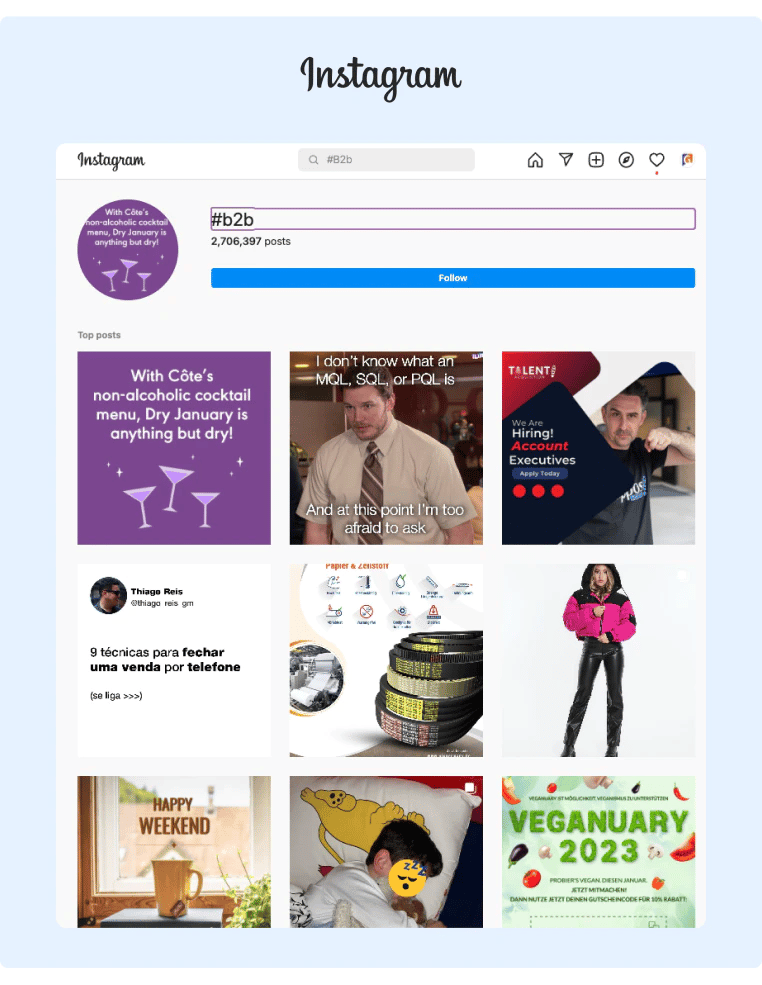
Instagram was launched in 2010 by Kevin Systrom and Mike Krieger, and later acquired by Facebook in 2012. Today, it has more than 1.35 billion users, and it has evolved from sharing photos and videos into a live-streaming medium. Instagram is also a popular platform for shoppable posts, too.
TikTok (2017-Present)

Since launching internationally in 2017, TikTok has quickly become one of the most popular social media platforms. The site has over 1 billion active users, giving them a platform to create short-form 15-second video content (or longer durations if needed) on any topic.
BeReal (2020-Present)
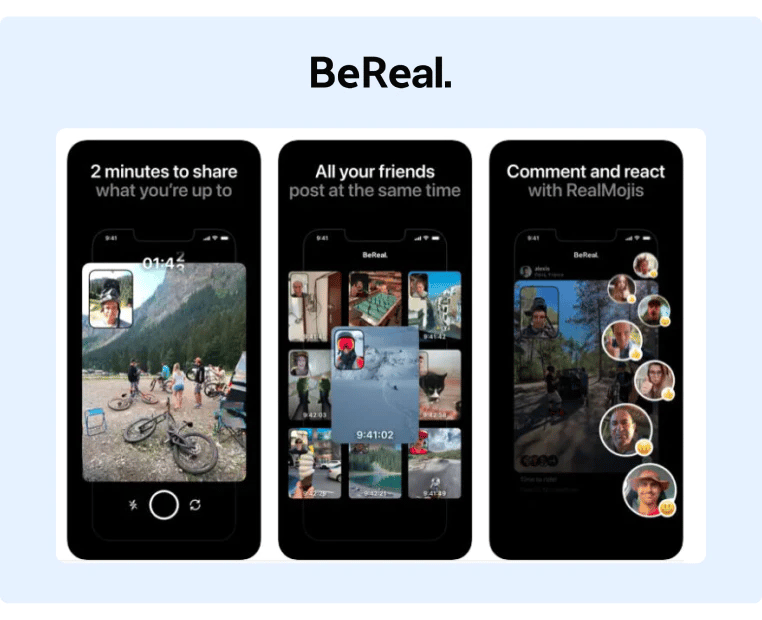
Source: The Media Leader
Unlike other photo-sharing apps that rely on photo filters, BeReal asks its users to post an unfiltered photo of themselves, encouraging them to be more authentic. The app has 73.5 million monthly active users and 20 million access the app daily.
Now that we know the history of social media platforms, let’s see how they’ve evolved from a social platform into a marketing tool.
Social Media Platforms Become Marketing Tools
It didn’t take long before marketers realized the enormous potential social media had for marketing campaigns. What started out as a simple medium for sharing photos, music, or personal thoughts, soon transformed into a powerful marketing tool.
In the early 2000s, social media evolved into platforms for businesses marketing to individuals. People were already present on social media, so why not meet them where they were and sell to them on their own turf? So, brands started creating their official profiles to promote their products and services and share insights from the industry. Since marketing on social media was still a new concept, marketers tested the waters by sharing blogs, ebooks, podcasts, etc.
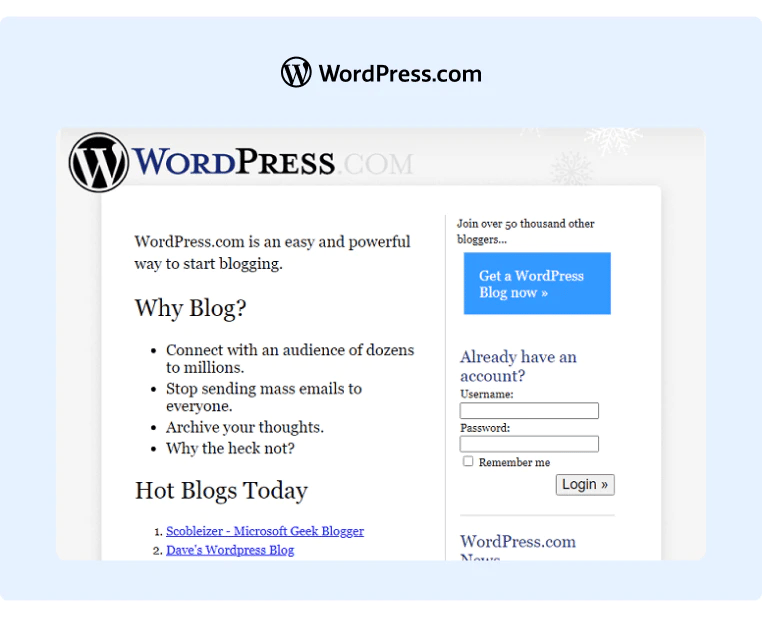
Source: Wayback Machine
In the 2010s, social media marketing evolved even further by marketers creating ads that targeted and retargeted audiences on social platforms along with measuring analytics (views, clicks, comments, etc.). Not only were social media platforms used for advertisement, but they were also the perfect ground for forming communities of loyal fans of the brand who, in turn, would become brand advocates.
Remember the “Share a Coke” campaign? It was first launched in 2011 in Australia when Coca-Cola replaced its logo with the most popular names, so people could enjoy their own personalized drinks. The campaign was so successful, they even took it to social media with the “Share a Virtual Coke” campaign:
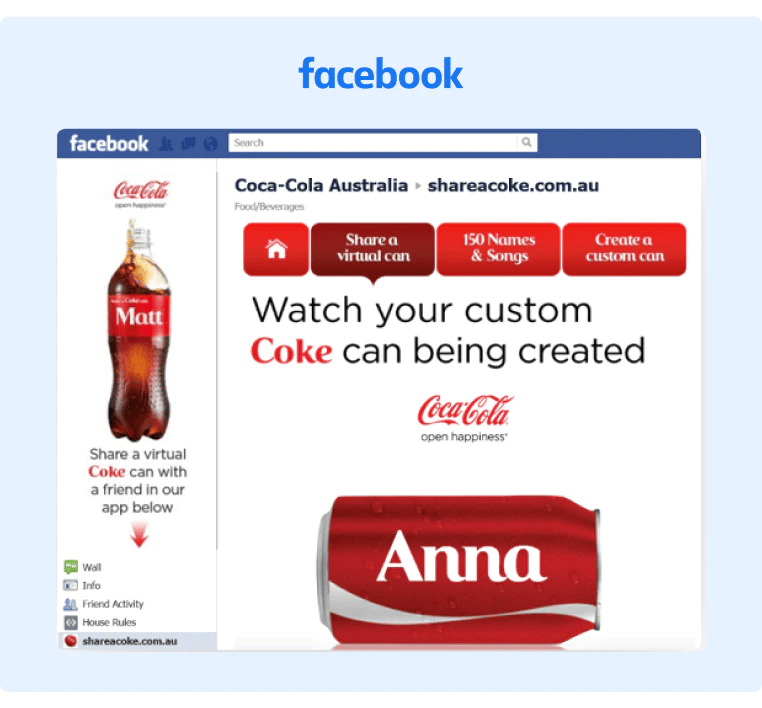
Source: Coca Cola
As social media marketing continued to grow, it wasn’t long before marketers started exploring other ways to reach consumers beyond ads.
Social Media Marketing Expands Beyond Ads
Today’s social media marketing is more than just paid social media (e.g., digital ads), it’s expanded to include organic social media. Organically posting enables a brand to establish its personality and voice, build relationships, and engage customers.
Here’s an entertaining example from Doritos. In this Instagram post, Doritos shares some eye-catching content along with an engaging caption. Notice Doritos is talking like your best friend venting after a long day.

Source: Doritos UK
This engaging free content encourages others to chime in and share with each other on their social feeds.
Producing organic social content isn’t the only way social media marketing has evolved. Today’s marketers are utilizing video content, user-generated content (UGC), influencer content, and even social commerce to reach their audience.
Video Content
TikTok is everywhere and that’s leaving social media users hungry for more video content. 85% of social media users asked for more video content from brands. Brands are delivering and reaping the rewards, with 78% of businesses saying they’ve increased their sales thanks to marketing videos on social media.
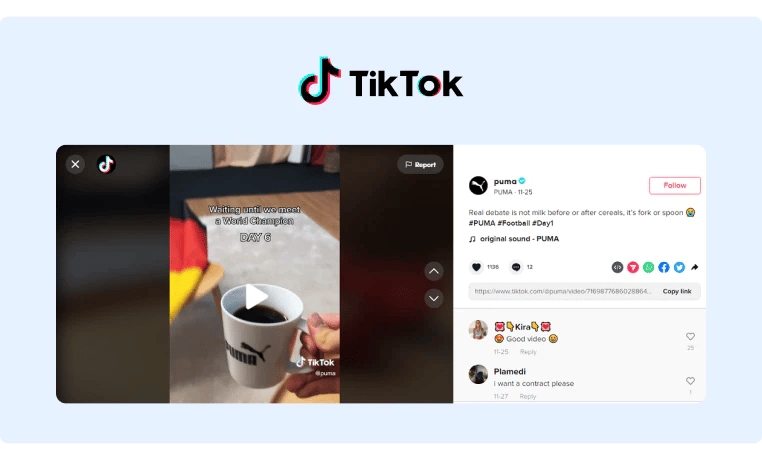
Source: Puma
User Generated Content (UGC)
Marketers recognize the value in sharing user generated content (UGC) and how it connects with their audience on an authentic level.
Here’s how it works. We create an Instagram reel of our favorite Starbucks holiday drink: an iced Sugar Cookie Almond Milk Latte. We post it to our Instagram and share it with our followers (e.g., friends and family). Soon our post receives likes and comments. Starbucks notices our Instagram Reel and shares it on their page, and more people like, comment, and ultimately purchase a latte.
That is the power of UGC – people trust reviews coming from friends and family. And it’s why 79% of consumers state UGC plays a role in their purchasing decision-making.
Influencer Content
Brands know collaborating with influencers opens the doors to a $16.4 billion industry. And who wouldn’t want a piece of that pie? So, why is influencer marketing so lucrative? Content produced by an influencer doesn’t look like traditional advertising, therefore an audience is more likely to trust what an influencer is reviewing.
In this example, @jahanara.makeup collaborates with MAC Cosmetics to create a holiday look using products from MAC’s Holiday Collection. Having an influencer tout these products is more relatable than a MAC brand model.
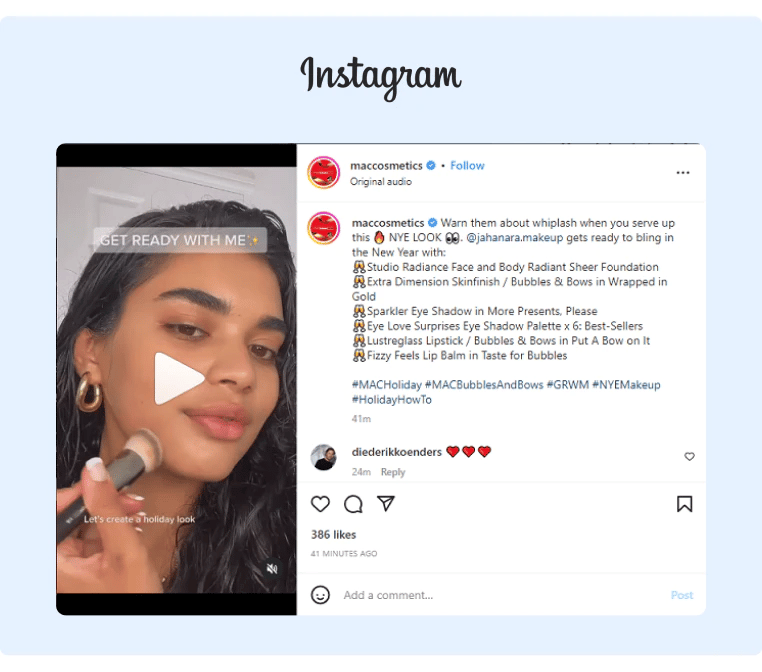
Source: MAC Cosmetics
Social Commerce
Marketers know social platforms are where people spend most of their time. Instead of only retargeting you (to get you to return to your shopping cart), they’re bringing their products directly to you in the social app. This form of social marketing is social commerce, and it can be found on TikTok, Snapchat, Pinterest, Facebook, and Instagram.
With social commerce, you might see a cozy pair of slippers on your Instagram feed, hit the “Shop Now” button, add it to your shopping cart, and complete the purchase all without having to leave the app. It’s so convenient, right? Well, that’s what marketers are banking on.

The value of social commerce is anticipated to reach $2.9 trillion by 2026.
How to Maximize Your Social Media Marketing Today
Now that you know the origins of social media platforms, how they became social marketing tools, and the types of social media marketing, let’s maximize your social media marketing.
We recommend implementing an employee advocacy strategy to take your social media marketing to the next level.
Employee advocacy is a solid method to increase your brand awareness. By having your employees engage in social posts you’ll be producing more authentic content, which will resonate with your target audience.
To see how GaggleAMP can help your social media marketing strategy, schedule a demo or try it out free today!










